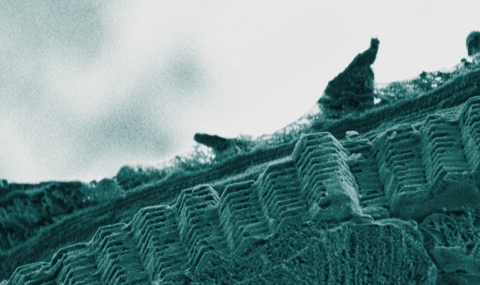 |
Functions of Biominerals in leaves
|
|
|
Calcium oxalate druses, amorphous calcium carbonate cystoliths and silica phytoliths are common components of a variety of plant leaves. These minerals are found at different locations within the leaf, and there is little conclusive evidence about the functions they perform. Here tools are used from the fields of biology, optics, and imaging by light and electron microscopy to investigate the distributions and the characteristics of calcium oxalate druses, silica minerals, and cystoliths in a variety of leaves |
 |
Koi Fish Scale Iridophore Cells Orient Guanine Crystals to Maximize Light Reflection
|
|
|
Fish scale iridophore cells deposit guanine crystals and assemble them into multilayer reflectors to produce a silvery iridescence. Crystal orientation controls the reflective properties of the scale, but little is known about the degree of orientation of the guanine crystals and whether or not this orientation is pre-determined at the individual cell level. To investigate this aspect, we grow iridophores separately from the scale in cell culture and examine the crystal orientation by synchrotron micro-X-ray diffraction. Cultured iridophores are flexible and motile, and azimuthal crystal orientations vary as the cells move. Yet, the great majority of the crystals are oriented parallel to the scale surface and perpendicular to the direction of the incoming light. It appears that iridophore cells function as independent units and that the control over crystal orientation is pre-determined at the individual cell level in the direction that is essential for function, namely exposing the large reflecting crystal surface to the light. |

 |
An Image Forming Mirror in the Eye of the Scallop
|
|
|
We are interested in understanding how organisms use organic crystals to manipulate light in a range of natural optical systems. Recently, we have been studying the eyes of aquatic animals such as crayfish and scallops which use mirrors constructed from molecular crystals to form images. These organisms exert exquisite control over the crystal morphology and ultrastructural arrangement to produce highly sophisticated visual systems. |




